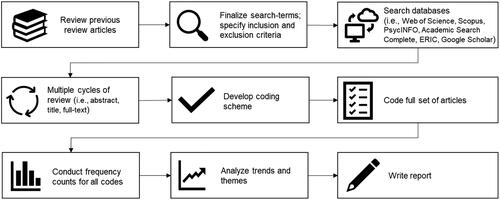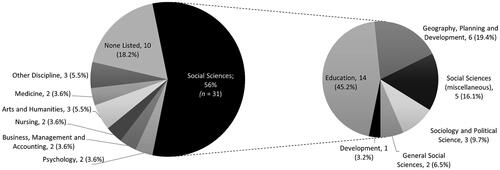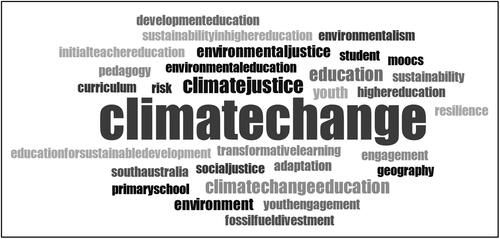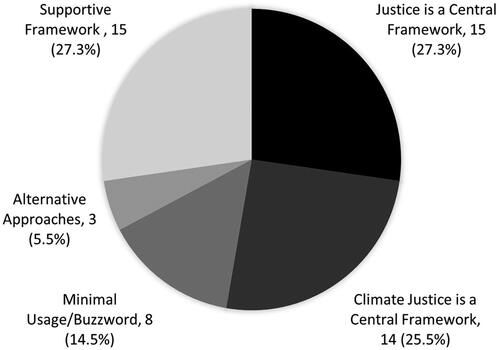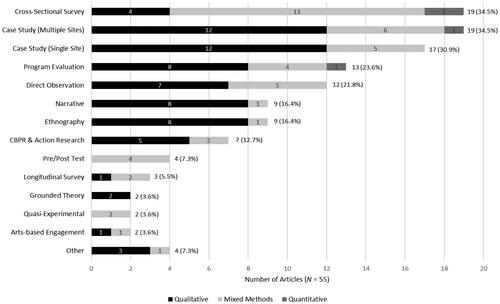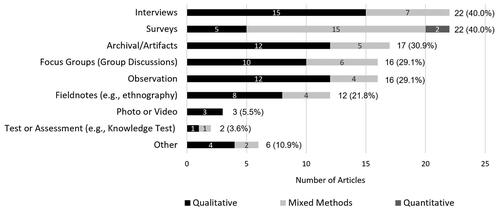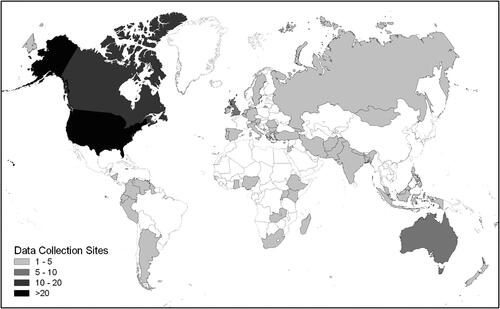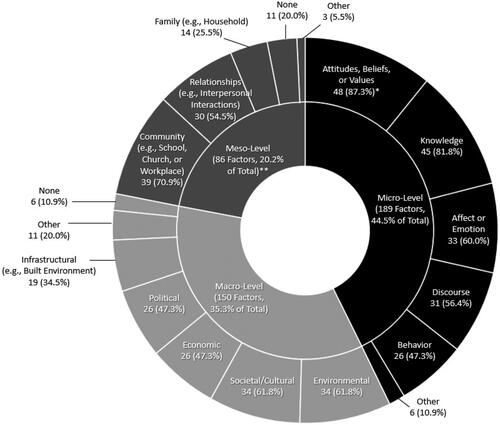Figures & data
Figure 4. CiteScore over time.
Note. Diamonds represent articles published in journals with a CiteScore. Dashes indicate articles published in journals with no CiteScore.
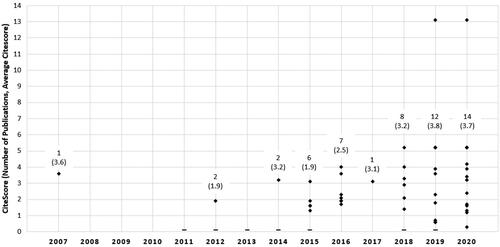
Table 1. Geographic location of author institutional affiliations.
Figure 8. Prevalence of justice framings across articles.
Note. The (Socio-)Ecological category included eco-justice, eco-social, socio-ecological, socio-environmental, and earth justice framings.
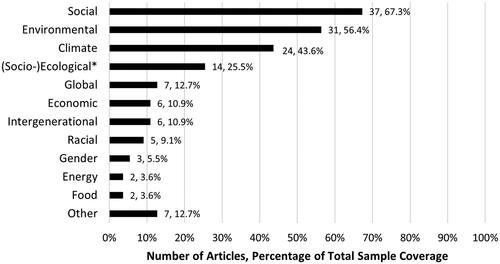
Table 2. Data collection countries across articles.
Table 3. Characteristics of education.
Table 4. Conceptualizing learning across studies.
Table 5. Characteristics of action across articles.

